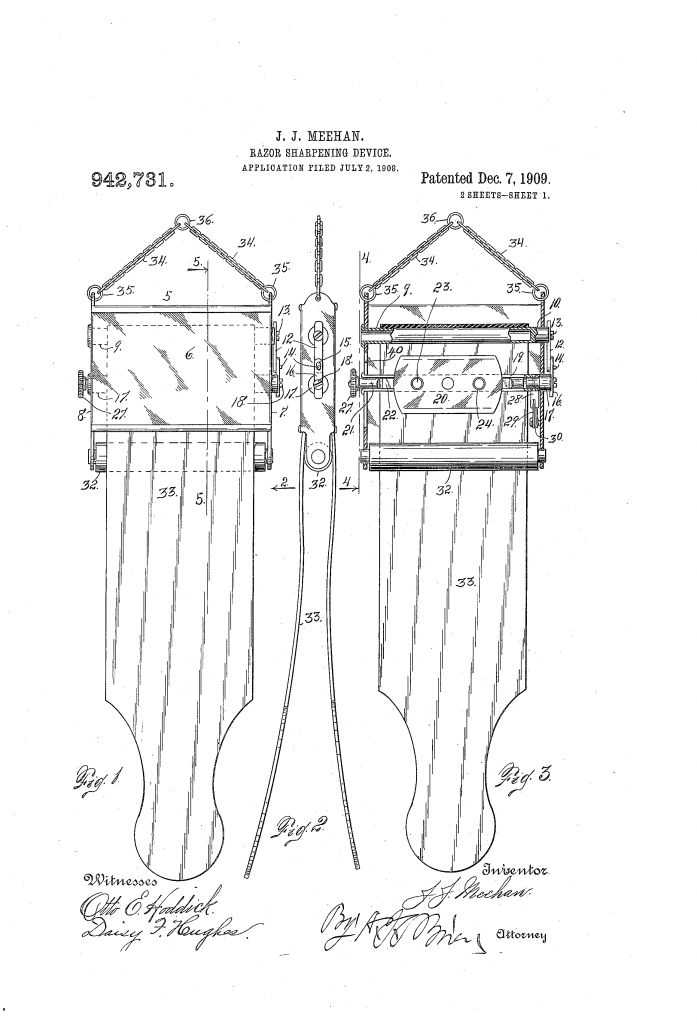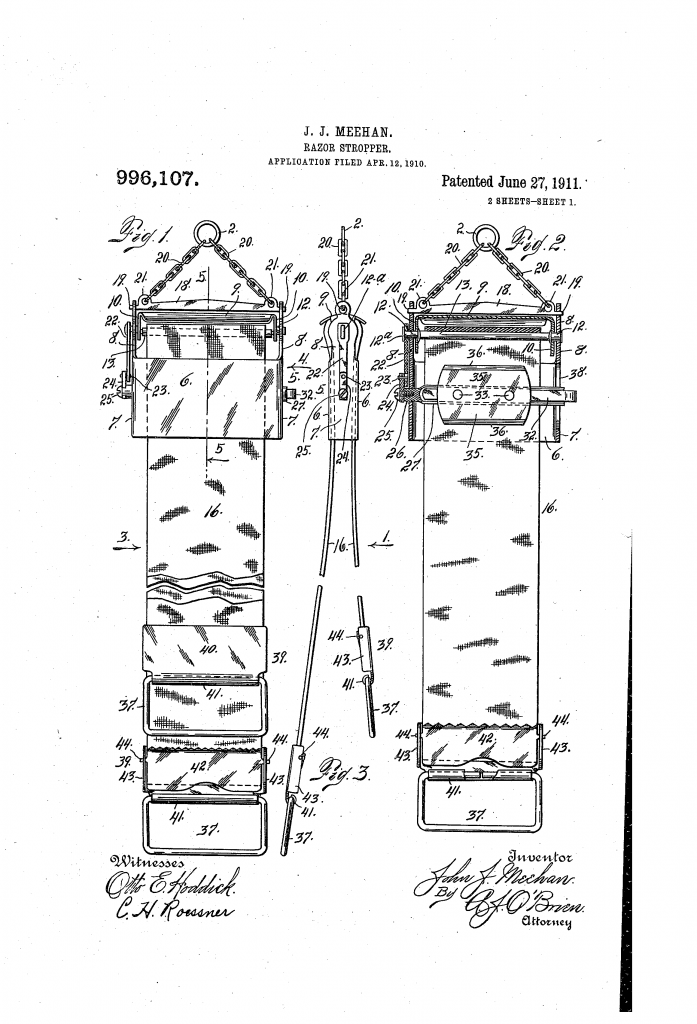Remember the adjustable shavette invented by John J Meehan? As I mentioned, that wasn’t his only shaving related invention. In 1909 and 1911 he received a pair of patents for a razor blade stropper. And while there are some differences between the two patents, what strikes me is the similarities – so I’ll cover them both at once.
Stropping or honing a razor blade to make it last longer or shave better is something most people don’t do today. But back before modern coatings, razor sharpeners were popular to the point of people making their own. So it is no surprise that John J Meehan got in on the action.
Both of the patents covers straps that strops double edged blades. They are similar1 enough that I am slightly surprised that he got two different patents. But let’s see what John claimed as the point of the whole exercise:
…my object being to provide a device of this class which shall be specially adapted for use in sharpening double edged blades of the Gillette or other similar types.
From US patent 942,731
One of the differences between the two patents, by the way, is that the later is able to be adjusted for other blades too.


Both inventions works the exact same way. A razor strop is run through a bracket. Inside the bracket is a holder for a razor blade. As the shaver grabs both ends of the strop and pulls it back and forth, the friction of the strop against a roller makes the blade tilt one way or the other – the movement being transmitted through a series of levers.
To quote again:
Preparatory to using the device, the blade-holder 32 is withdrawn from the rock spindle 27, the parts being originally in the position shown’ in Fig. 1. The blade is then applied to the holder as shown in .Fig. 13, after which the blade and holder are inserted endwise through slot 38, formed in” one end of the casing. The device is then ready for use, it being assumed that the strop 16 has been threaded through the rocking member 9 below the cap 17 and engaging the pins 13. Then as the opposite extremities of the strop are alternately pulled toward the user, a rocking movement is imparted to the device 9, which movement is transmitted through the toggle members 22 and 24, to the rock-spindle 27 to which are imparted partial rotations in reverse directions, whereby the edges of the blade are alternately thrown into engagement with the adjacent surfaces of the strop, whereby both edges of the blade are being simultaneously engaged by the strop, but on opposite sides. It will be understood that the rocking movement of the spindle 27, always has a direction the reverse of that of the member 9 but the rocking-action is simultaneously imparted to both members,to the member 9 directly by the action of the strop, and to the member 27 through the medium of the toggle.
From US patent 996,107
Mechanically the inventions are pretty simple. As long as the two halves of the strop are kept reasonable straight, the stropping angle is self adjusting. There is really no reason that I can see for the inventions not to be successful – but today the idea of stropping your razor blades to make them last longer and shave better seems to have gone the way of the dodo.2 Modern blades don’t need stropping or sharpening. Doing so would in fact damage the coating and make the blade more likely to rust and tug.
As almost always, you can read both patents on Google Patents. If you enjoy this sort of things, I got a long list of posts I’ve made on my blog about old razor and shaving patents, as well as other shaving related oddities.
Footnotes
- At least in my opinion.
- The dodo was a flightless ground pigeon living on Mauritius, which became extinct in the 17th century due to human activity.
